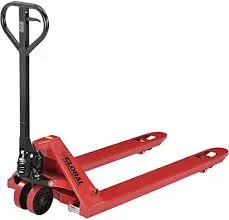


Understanding Electric Winch Operation
Electric winches are essential tools widely used in various industries for lifting and pulling heavy loads. Their operational efficiency and ease of use have made them popular in construction, maritime, and automotive applications. This article will provide an overview of electric winch operation, including their components, functioning, and safety considerations.
Components of an Electric Winch
An electric winch consists of several key components that work together to perform lifting and pulling tasks. The primary components include
1. Motor The heart of the winch, the electric motor powers the winch and controls the speed and force applied to the load.
2. Gearbox This component reduces the motor's speed while increasing the torque, which allows for stronger pulling power. Some winches come equipped with different gear ratios for various applications.
3. Drum The drum is where the cable or rope is wound. It rotates to either release or retract the cable during operation.
4. Cable/Rope This is the line that connects the winch to the load. Steel wire ropes and synthetic ropes are commonly used, each offering specific benefits depending on the application's demands.
5. Control System Most electric winches come with a handheld remote or a control panel, allowing operators to control the winch safely from a distance.
Operation of Electric Winches
Operating an electric winch requires an understanding of its controls and functions
. The process typically involves the following steps1. Setup Begin by securely anchoring the winch to a stable platform or vehicle. Ensure that the winch is rated for the load it will be moving.
2. Connecting the Load Attach the cable or rope to the load using appropriate shackles or connectors. Make sure the connection is secure to prevent any accidents during operation.

3. Powering Up Connect the winch to a compatible power source. This could be a battery or a direct AC power line, depending on the model.
4. Operating the Winch Use the remote control or panel to engage the motor. Operate the winch slowly at first, gradually increasing speed as you monitor the load’s movement. Always stay vigilant and maintain a clear line of sight to the load.
5. Releasing the Load Once the load has been moved to the desired position, carefully release the tension on the cable or rope. Ensure that the area is clear of obstruction before retracting the cable.
Safety Considerations
Safety is paramount when operating an electric winch. Here are a few essential safety tips
- Read the Manual Familiarize yourself with the winch's operating manual and specifications before use.
- Inspect Equipment Always inspect the winch, cables, and rigging equipment for wear and tear before each use.
- Load Limits Never exceed the manufacturer's specified load limit for the winch. Overloading can lead to mechanical failure or accidents.
- Maintain Distance Ensure that bystanders maintain a safe distance while the winch is in operation to avoid potential injuries from load swings or cable snaps.
- Proper Training Only trained individuals should operate electric winches. Training should cover both operational and emergency procedures.
Conclusion
Electric winches are powerful tools that streamline lifting and pulling tasks across various industries. Understanding their operation and adhering to safety protocols can enhance efficiency and minimize risks. With the right knowledge and precautions, operators can effectively utilize electric winches for a range of applications while ensuring a safe working environment. Whether on a construction site or in a warehouse, mastering the operation of an electric winch is a valuable skill that can lead to significant improvements in productivity and safety.



